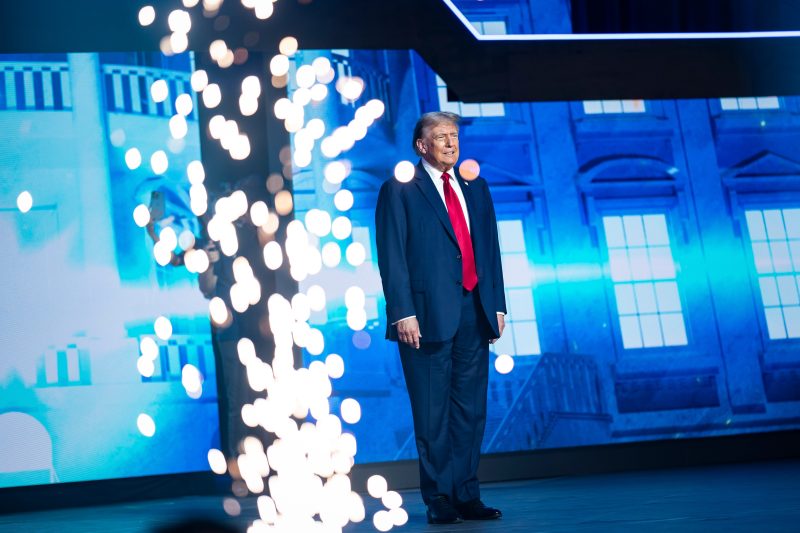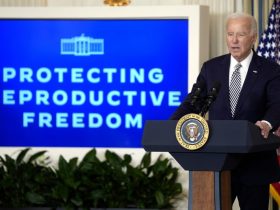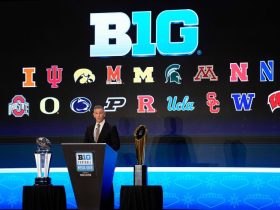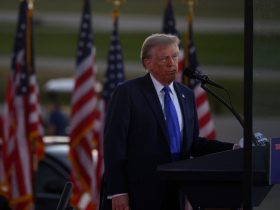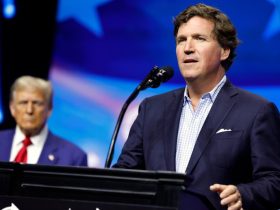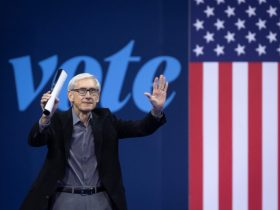For more than 40 years before he first ran for president, Donald Trump was in the business of persuading people to buy things. And not in some idealized, best-of-American-capitalism sense: He sold real estate in New York City, which is a bit like selling used cars anywhere else. Eventually, he just sold himself and his name, which was less anchored to reality and a good jumping-off point for seeking elected office.
We can see how he sold real estate and the Trump brand in how he sells his candidacies. He offers few details and sweeping assertions, little in the way of specifics and a lot in the way of promises. He tells people what he thinks they want to hear, often trying to tell people different things at the same time. The goal is to make the sale, dealing with complaints once the money or the vote is in hand.
You can see it at work in his effort to distance his campaign from the Heritage Foundation’s Project 2025, a road map for a Republican president to overhaul the federal government that has become a point of attack for Trump’s critics.
“I know nothing about Project 2025. I have no idea who is behind it,” Trump wrote on his social media platform. “I disagree with some of the things they’re saying and some of the things they’re saying are absolutely ridiculous and abysmal. Anything they do, I wish them luck, but I have nothing to do with them.”
He knows nothing about it … and disagrees with some of it. He thinks they are doing ridiculous things … and wishes them luck. If you are a Trump supporter, you see this as a way to slice off problematic components of the project’s proposals. If you are an undecided voter, (Trump presumably hopes) you will see this as Trump putting the plan at a distance from his campaign — so all those news reports about the extreme components of Project 2025 get bucketed at some distance from Trump himself.
There are just two problems with that bucketing. The first is that Project 2025 is obviously intertwined with Trump’s universe of allies and staff. And the second, related problem is that a second Trump administration will depend on those allies and that staff to run the government.
The conservative site Daily Signal — an offshoot of the Heritage Foundation — began promoting Project 2025 more than a year ago. It noted the involvement of Russ Vought, director of the Office of Management and Budget during Trump’s administration. It highlighted an interview between Heritage’s president and John McEntee, who joined the Project 2025 effort in May 2023 to continue work he began under Trump: maximizing the number of Trump loyalists in government.
In November, the Trump campaign first tried to distance itself from Project 2025. Senior staffers noted that “none of these groups or individuals speak for President Trump or his campaign.” That’s technically true. Trump has his own scattershot set of policy proposals, ones heavily responsive to the state of the Republican presidential primary when they were published in 2022 and 2023. But the idea that Trump’s campaign has no overlap with Project 2025 is a fiction.
For instance — as President Biden’s reelection campaign pointed out over the weekend — longtime Trump adviser Stephen Miller is shown in a video promoting Project 2025’s “Presidential Administration Academy.” Miller dismissed it as “an advice video for students,” though the hefty Project 2025 “Mandate for Leadership” document sits on a table next to him. (That video also features the Trump campaign’s national press secretary, Karoline Leavitt.) Miller’s organization, America First Legal, is also listed as a member of Project 2025’s advisory board.
Vought would almost certainly play a significant role in a second Trump administration, potentially White House chief of staff. So would McEntee, who said in a podcast this year that “we’re going to integrate a lot of our work with them” — the “our” being Project 2025 and the “them” being the campaign.
“But,” he added, “I think keeping the two separate is actually the most beneficial way to go about it.”
This is the point. It is useful for Trump and his allies to maintain the perception of a barrier between what Project 2025 documents — the desired outcomes of conservative and right-wing activists — and what the guy on the ballot says he himself will do. Trump wants voters to assume that he won’t simply implement what conservatives and the right-most elements of his party want to see. He then intends to be elected and staff his administration with people who will do precisely that.
In that sense, Project 2025 is quite useful. Since Trump won’t explain what he plans to do as president with any specificity, there’s little recourse but to figure out what his appointees might do. And the Heritage Foundation compiled a 900-plus-page tome that gets a lot of potential appointees on the record. Its Presidential Administration Academy aims specifically to aggregate résumés from less-well-known people who might be tapped to fill in the lower levels of a Trump administration, all of them briefed on Project 2025’s desired outcomes.
“Personnel is policy,” Morton Blackwell observed back when Trump was still selling condos in Manhattan. It remains true — especially for a candidate who abhors policy specifics. Project 2025, then, isn’t an outline of how Trump would run the federal government but, instead, a delineation of the views of the sorts of people that would be in charge of running it.
There’s no reason to think that Trump agrees with everything that’s in Project 2025. But identifying those specific things that are “ridiculous and abysmal” means endorsing everything else. It means outlining his policy proposals in detail, which he doesn’t want to do. And so he’s saddled with the proposals made by people who want to and eventually may work for him — if their proposals don’t first drag down his candidacy.

